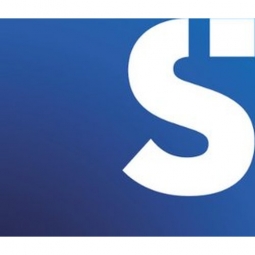Technology Category
- Analytics & Modeling - Machine Learning
- Analytics & Modeling - Real Time Analytics
Applicable Industries
- Retail
- Transportation
Applicable Functions
- Logistics & Transportation
Use Cases
- Continuous Emission Monitoring Systems
- Last Mile Delivery
Services
- Data Science Services
About The Customer
The Eckes-Granini Group is a leading European producer of fruit juice with a turnover just shy of €1 billion. The company sells roughly 850 million litres of beverages each year and is the leading supplier in Germany. Their products are distributed to over 650 customer delivery sites by 40 carriers, making a total of 35,000 deliveries per year. The company was facing challenges in its distribution process, including high penalties due to strict slot management rules and a large number of empty runs for return journeys.
The Challenge
Eckes-Granini, a leading European producer of fruit juice, was facing a significant challenge in its distribution process. The company's strict slot management rules imposed by retail clients were resulting in high penalties each year. Additionally, the company was making a large number of empty runs for return journeys, which not only increased costs but also contributed to CO2 emissions. The company was looking for a solution that could streamline its operations, increase carrier efficiency, reduce loading times, and lower its carbon footprint.
The Solution
Eckes-Granini partnered with Shippeo to leverage real-time visibility in its distribution process. The predictive and real-time visibility of goods delivery provided by Shippeo helped Eckes-Granini achieve three main goals. Firstly, it reduced loading times and optimized operations at Eckes-Granini locations. Secondly, it increased retailer satisfaction through shorter waiting times at unloading points, enabled by proactive ETA notifications and better availability of goods to customers. Lastly, carriers benefited from more efficient operations thanks to reduced downtime and empty runs. In addition, Eckes-Granini and Shippeo launched a truck space sharing project with the German hypermarket chain Kaufland to avoid empty runs and idle time in logistics. Using a combination of Big Data and machine learning, Shippeo was able to calculate the optimal supply chain between Eckes-Granini's warehouses and Kaufland's locations.
Operational Impact
Quantitative Benefit

Case Study missing?
Start adding your own!
Register with your work email and create a new case study profile for your business.
Related Case Studies.

Case Study
Airport SCADA Systems Improve Service Levels
Modern airports are one of the busiest environments on Earth and rely on process automation equipment to ensure service operators achieve their KPIs. Increasingly airport SCADA systems are being used to control all aspects of the operation and associated facilities. This is because unplanned system downtime can cost dearly, both in terms of reduced revenues and the associated loss of customer satisfaction due to inevitable travel inconvenience and disruption.

Case Study
IoT-based Fleet Intelligence Innovation
Speed to market is precious for DRVR, a rapidly growing start-up company. With a business model dependent on reliable mobile data, managers were spending their lives trying to negotiate data roaming deals with mobile network operators in different countries. And, even then, service quality was a constant concern.

Case Study
Digitize Railway with Deutsche Bahn
To reduce maintenance costs and delay-causing failures for Deutsche Bahn. They need manual measurements by a position measurement system based on custom-made MEMS sensor clusters, which allow autonomous and continuous monitoring with wireless data transmission and long battery. They were looking for data pre-processing solution in the sensor and machine learning algorithms in the cloud so as to detect critical wear.

Case Study
Cold Chain Transportation and Refrigerated Fleet Management System
1) Create a digital connected transportation solution to retrofit cold chain trailers with real-time tracking and controls. 2) Prevent multi-million dollar losses due to theft or spoilage. 3) Deliver a digital chain-of-custody solution for door to door load monitoring and security. 4) Provide a trusted multi-fleet solution in a single application with granular data and access controls.

Case Study
Improving Production Line Efficiency with Ethernet Micro RTU Controller
Moxa was asked to provide a connectivity solution for one of the world's leading cosmetics companies. This multinational corporation, with retail presence in 130 countries, 23 global braches, and over 66,000 employees, sought to improve the efficiency of their production process by migrating from manual monitoring to an automatic productivity monitoring system. The production line was being monitored by ABB Real-TPI, a factory information system that offers data collection and analysis to improve plant efficiency. Due to software limitations, the customer needed an OPC server and a corresponding I/O solution to collect data from additional sensor devices for the Real-TPI system. The goal is to enable the factory information system to more thoroughly collect data from every corner of the production line. This will improve its ability to measure Overall Equipment Effectiveness (OEE) and translate into increased production efficiencies. System Requirements • Instant status updates while still consuming minimal bandwidth to relieve strain on limited factory networks • Interoperable with ABB Real-TPI • Small form factor appropriate for deployment where space is scarce • Remote software management and configuration to simplify operations




